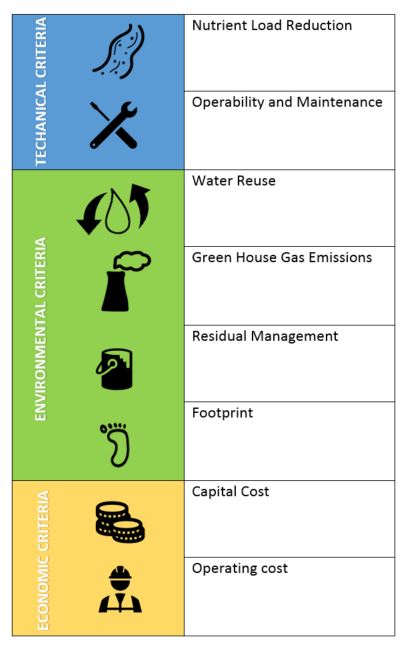Nutrient reduction options
Upgrades to Waterwater Treatment Plants and new plants are a large investment for regional councils and require 'optioneering processes' to canvas relevant technologies. This page summarises technologies relevant to Reef Councils with comparisons using a 'Multiple Criteria Analysis' to provide a high-level review for decision makers. The options below are targeted at reducing nutrient flows into the Great Barrier Reef but are applicable across Queensland. The next step after short-listing options using a Multiple Critertia Anlaysis is to undertake a more detailed 'life cycle assessment'.
The following overarching principles were used to identify nutrient reduction options.
- Options that are practical and have been applied elsewhere at a commercial scale;
- Options with primary focus on nitrogen removal;
- Options that can be implemented onsite or offsite in collaboration bewteen councils and local businesses including the agriculture sector.
The treatment options are sorted into the following three categories:
Offset options
The nutrient reduction is achieved by offsetting total nutrient loads entering the catchment system. This is often through bubble licences or a diffuse source nutrient reduction action. The option should be cost effective or achieve environmental outcomes. Generally, no major infrastructure or expensive setup is required at the WWTP to implement this option.
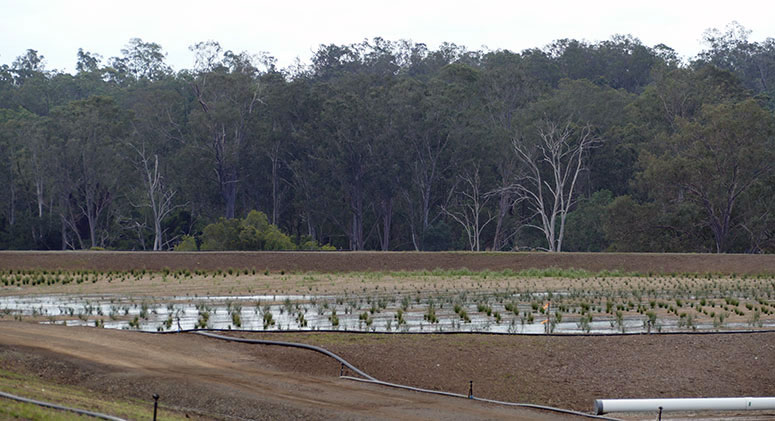 Offset Wetlands
Offset Wetlands
Riparian streambank rehabilitation
Streambank rehabilitation to reduce nutrient runoff from a range of land uses. Projects will also assist in bank protection from other stresses such as boat wash.
Improved fertiliser management
Reduce nutrient application in farming through improved fertiliser application management practices (above any required minimum standards).
Other farming best practices
Reduce farming run-off through implementation of other best management practices (above any required minimum standards) e.g. improved grazing land management near waterways such as fencing and cattle exclusion, improved irrigation management, adoption of productive, perennial and palatable (3P) pastures, etc.
Urban stormwater management
Urban stormwater controls such as WSUD (beyond meeting the design objectives under the State Planning Policy 2017, State Interest Water Quality).
Constructed or remediated wetlands
On or off-stream wetland systems that will assist in absorbing/retaining nutrients from waterways.
Load reduction from other industries/ERA’s
Bioremediation or other technology to treat wastewater from other unrelated industries e.g. aquaculture farm water. This also include industrial pre-treatment. Note, trading between point sources is currently not allowed in the draft Policy.
Bubble licences
Licensing that allows pooling or trading overall nutrients loads with nearby WWTPs owned by the same utility.
Erosion management
Management of hillslope, sheet, gully, channel and stream bank erosion in upper, middle and lower catchments. Works can include gully repair and flow diversions, leaky weirs, hill slope reshaping and pasture renovation, etc.
Low-tech options
The nutrient reduction is achieved by implementing a low technical or low engineering option. Some of the options are non-traditional and are not widely implemented in the industry. Generally, minor infrastructure upgrades may be required at the WWTP or offsite to implement this option.
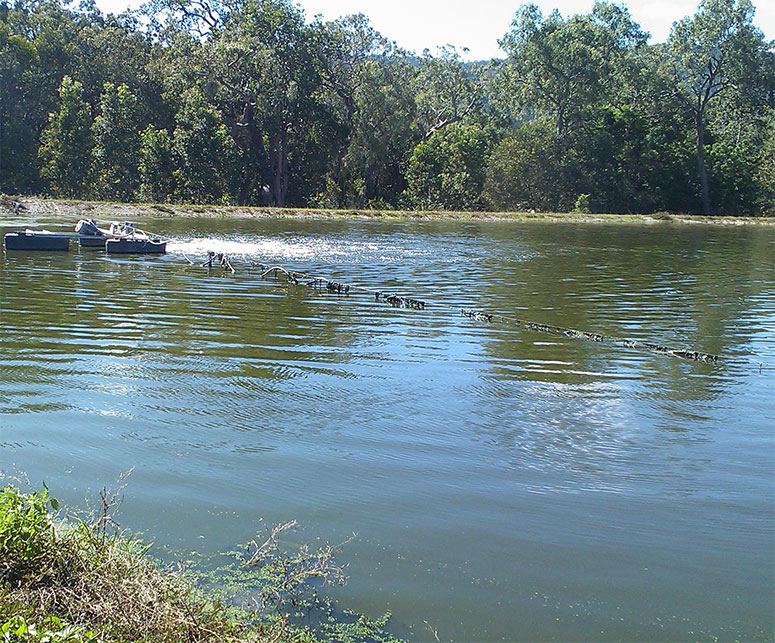 Low-tech lagoon
Low-tech lagoon
Wet weather storage
Increase storage onsite at WWTP or finance/manage storage offsite to allow for reduction in overall sewage bypass releases particularly during wet weather.
Wet weather release strategies
Wet weather release strategies that allow for reduced/zero nutrient loads during wet weather. This include treatment of storm overflow to reduce nutrient load entering the environment.
Recycling
Recycling for various customers that can be separated into distinct types e.g. agricultural, industrial, residential third pipe, indirect/direct potable reuse, sporting/recreational facilities, water carriers, etc. Assuming no major infrastructure is required to achieve recycled water quality.
Crop production onsite
Irrigation and production onsite at the WWTP of suitable crops such as vetiver grass, Pongamia trees, etc
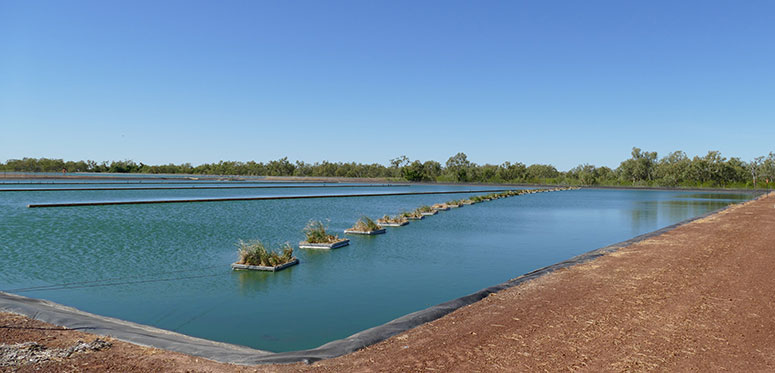 Vetiver grass in a low-tech lagoon
Vetiver grass in a low-tech lagoon
Crop production offsite
Crop production and irrigation offsite to land (possibly farmland) owned or purchasable by councils/utilities (aka beneficial/productive disposal).
Constructed Wetlands
This technology has been piloted in QLD to bioaccumulate nutrients from sewage wastewater. Constructed wetlands can be configured as:
- Surface Flow (open water – natural)
- Surface Flow with advanced layout (floating mat)
- Subsurface flow
- Combined surface and subsurface
Lagoon based treatment
Low technical, low maintenance and low-cost option can be retrofitted or as replacement technology at the existing WWTP. There are three major types of lagoon-based treatment:
- Maturation Lagoons
- Aerated Lagoons
- Pond Enhanced Treatment Operation (PETRO)
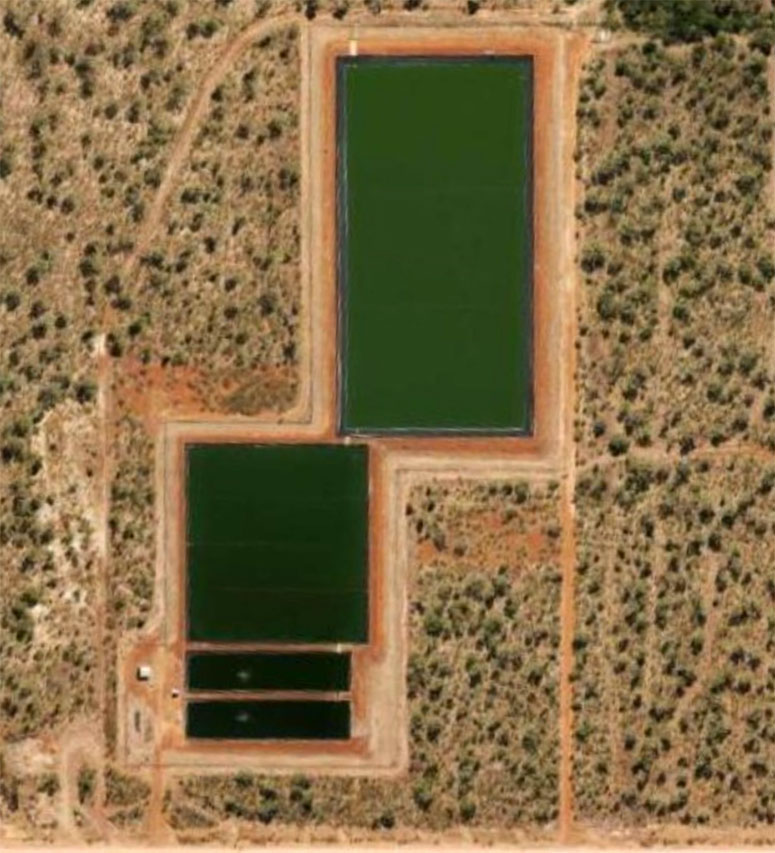 Aerial view of a low-tech lagoon
Aerial view of a low-tech lagoon
Algae and diatom production
Growing algae in wastewater is an economical and environmentally friendly alternative. Algae and diatom bioaccumulates nutrients and can strip ammonia to the atmosphere from the wastewater simultaneously providing CO2 mitigation and high-value end products such as biodiesel.
Outfall relocation
Relocation of the effluent release point may reduce localised impacts in poorly located locations and also potentially redirect loads from key GBR receiving waters.
Inflow and infiltration management
Reduction in inflow and infiltration flows to reduce loading of sewer system and WWTPs during wet weather. Therefore, reducing potential for wet weather raw sewer overflows at pumping stations and untreated bypass events at WWTPs.
Water conservation measures
Such measures may assist to reduce overall flows directed to WWTPs from residential and industrial customers.
Redirect influent flows
Redirecting influent flows to another WWTP which may have capacity and higher nutrient removal and/or better located release points.
Low-tech engineering
- Rotating Biological Contactor
- Rock bank filters for algae removal from ponds
- Woodchip Bioreactor
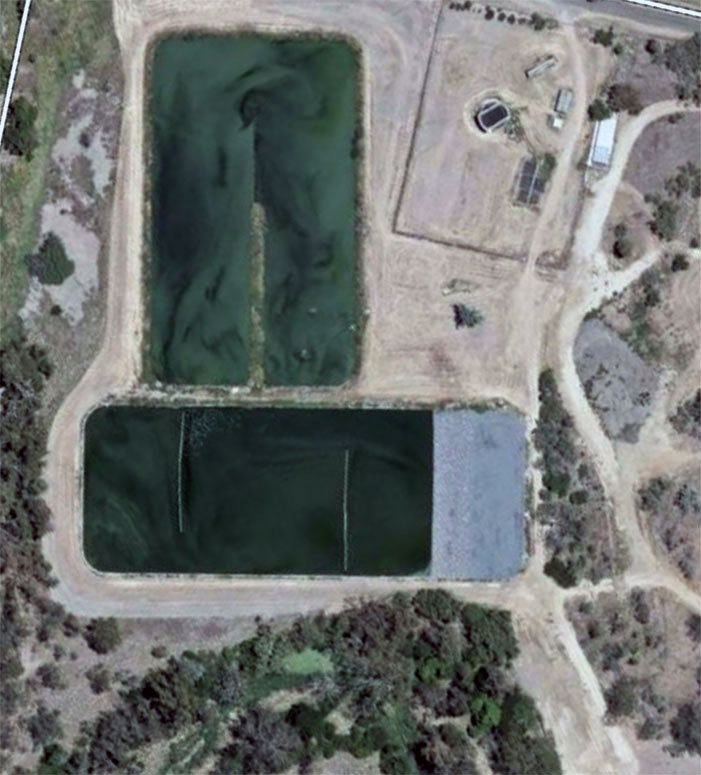 Aerial view of a baffle low-tech lagoon
Aerial view of a baffle low-tech lagoon
High-tech engineering options
These are mainstream technologies widely applied at the WWTP for nutrient removal. Major infrastructure upgrades may be required at the WWTP to implement this option. The technologies can be a retrofit or replacement for existing WWTP process components.
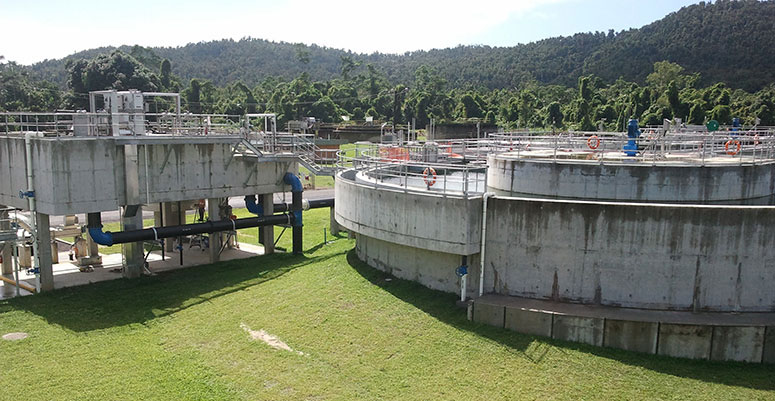 High-tech engineering WWTP
High-tech engineering WWTP
Activated sludge suspended growth
- BOD removal only (low sludge age)
- Nitrification only. Aerobic only
- Nitrogen removal only (Nitrification and denitrification). Aerobic and anoxic configurations.
- Both nitrogen and phosphorus removal. Anaerobic, anoxic and aerobic configurations.
- Denitrification
Activated sludge combined system
- Integrated Fixed Film - Activated Sludge
- Activated Sludge/Activated Biofilter (ABF)
- Trickling Filter/Activated Sludge
- Trickling Filter/Solid Contact
Attached growth
Both aerobic and anoxic type:
- Moving Bed Bioreactor (MBBR)
- Fluidized Bed
- Packed Bed
Chemical nutrient removal
- Carbon dosing in the activated sludge process for nitrogen removal
- Chemical dosing for phosphorus removal
Physical nutrient removal
- Adsorption
- Ion exchange
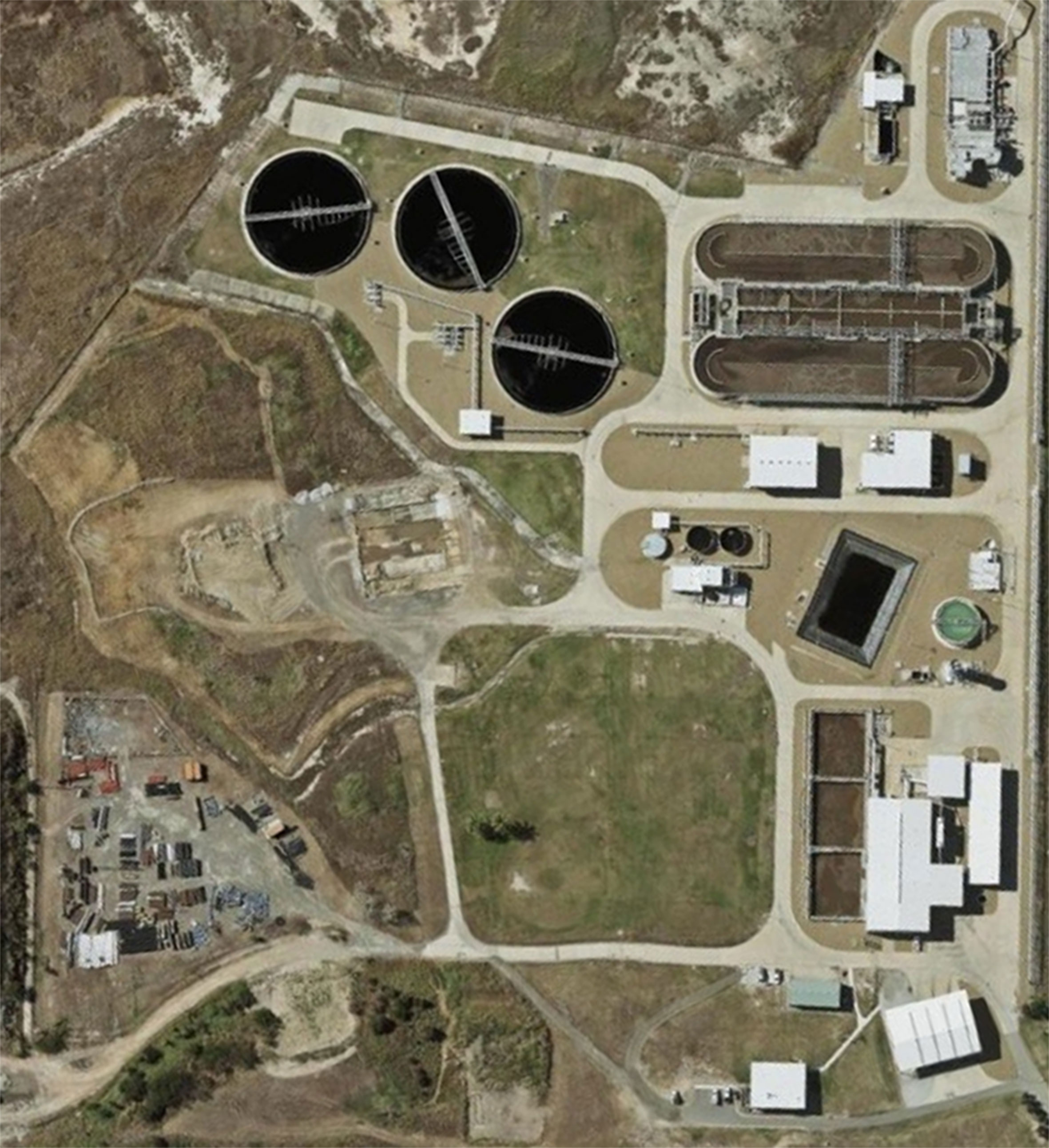 Aerial view of a high-tech engineering WWTP
Aerial view of a high-tech engineering WWTP
Filtration/ solids removal technologies
- Sand Filtration
- Floating Media Filter (both organic and inorganic media)
- Granular Activated Carbon
- Pressure Filters
- Biological Filters
- Cloth Filters
- DAF for algae removal from ponds.
Membrane based treatment
- Microfiltration (NF)
- Reverse Osmosis (RO)
- Nano-filtration (NF)
- Ultra-Filtration (UF)
- Forward Osmosis (FO)
- Electrodialysis (ED)
Digestate side-stream technologies
- Ammonia Stripping (air or steam stripping)
- Vacuum Flash Distillation
- Membrane Contactor
- Electrodialysis (ED)
- Struvite Recovery
- Ammonia Oxidation (ANNAMOX process, ANITA Mox)
- Bioaugmentation (MAUREEN – Mainstream Autotrophic Recycling Enabling Enhanced N-removal process)
- Nitrification-Denitrification (e.g. Sequential Batch Reactor (SBR) and Membrane Bioreactor (MBR))
- Nitritation-Denitritation (e.g. SHARON – Single reactor system for high activity ammonia removal over nitrite process)
- Deammonification (e.g. ANAMMOX)
- Intermittent deammonificaton (DEMON process)
- Ion-exchange
- Adsorption
- Aerobic Digestion
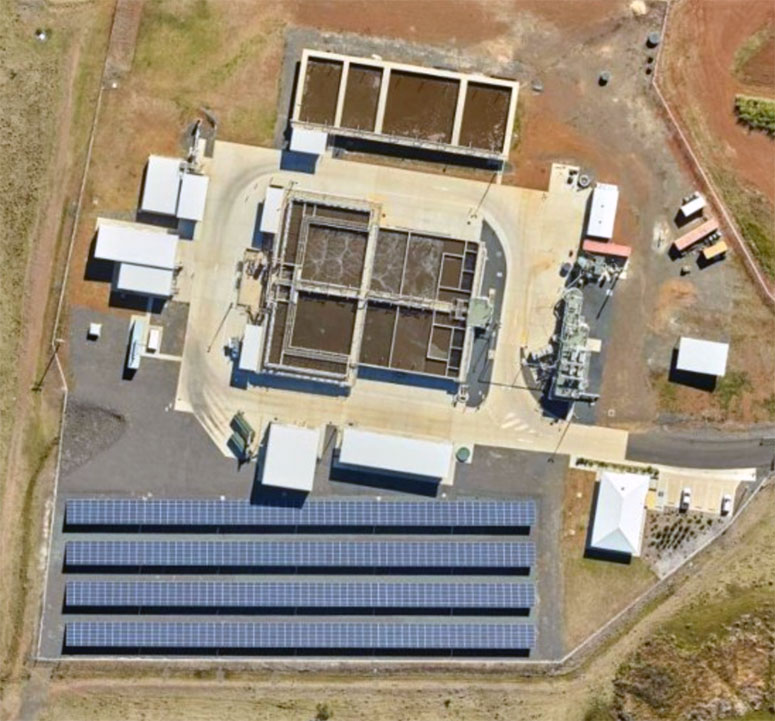 Aerial view of a high-tech engineering WTTP
Aerial view of a high-tech engineering WTTP
Case study - options analysis for small WWTPs.
A high-level analsysis using the Options Matrix approach was undertaken for a typical small wastewater treatment plant as a case study of how the criteria might be scored for small towns. The results are summarised in the table below.
| Technical Criteria | Ecological Criteria | Economic Criteria | |||||||
|---|---|---|---|---|---|---|---|---|---|
| Offset | Streambank Rehabilitation | ||||||||
| 'Low-Tech' | Lagoon Treatment | ||||||||
| 'Low-Tech' Engineering | |||||||||
| Inflow and Infiltration Management | |||||||||
| Constructed Wetlands | |||||||||
| 'High-Tech' | Activated Sludge Suspended Growth | ||||||||
| MBR | |||||||||

Note: the 'Nutrient Reduction' criterion is scored as not-apllicable (NA) for 'Streambank Rehabilitation' and 'Inflow and Infiltration Management' because these are not technical criteria assessed in the immediate installation of these mechanisms. However, both mechanims are targeted at reducing nutrients and thus score well (5) for 'Residual Management'.

